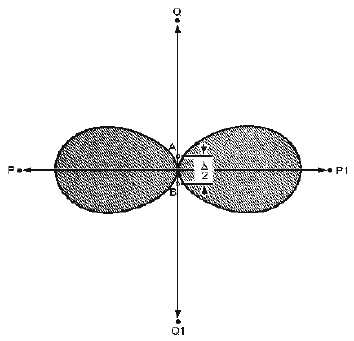4-32
Figure 4-27.—Parallel elements in phase.
Next consider a wavefront traveling toward point Q from antenna B. By the time it reaches antenna
A, 1/2 wavelength away, 1/2 cycle has elapsed. Therefore energy from antenna B meets the energy from
antenna A 180 degrees out of phase. As a result, the energy moving toward point Q from the two sources
cancels. In a like manner, radiation from antenna A traveling toward point Q1 meets and cancels the
radiation in the same direction from antenna B. As a result, little propagation takes place in either
direction along the QQ1 axis. Most of the energy is concentrated in both directions along the PP1 axis.
When both antenna elements are fed from the same source, the result is the basic broadside array.
When more than two elements are used in a broadside arrangement, they are all parallel and in the
same plane, as shown in figure 4-26, view B. Current phase, indicated by the arrows, must be the same for
all elements. The radiation pattern shown in figure 4-26, view C, is always bi-directional. This pattern is
sharper than the one shown in figure 4-27 because of the additional two elements. Directivity and gain
depend on the number of elements and the spacing between them.
GAIN AND DIRECTIVITY.—The physical disposition of dipoles operated broadside to each other
allows for much greater coupling between them than can occur between collinear elements. Moving the
parallel antenna elements closer together or farther apart affects the actual impedance of the entire array
and the overall radiation resistance as well. As the spacing between broadside elements increases, the
effect on the radiation pattern is a sharpening of the major lobes. When the array consists of only two
dipoles spaced exactly 1/2 wavelength apart, no minor lobes are generated at all. Increasing the distance
between the elements beyond that point, however, tends to throw off the phase relationship between the
original current in one element and the current induced in it by the other element. The result is that,
although the major lobes are sharpened, minor lobes are introduced, even with two elements. These,
however, are not large enough to be of concern.
If you add the same number of elements to both a broadside array and a collinear array, the gain of
the broadside array will be greater. Reduced radiation resistance resulting from the efficient coupling
between dipoles accounts for most of this gain. However, certain practical factors limit the number of


